Ashura in Iran
-
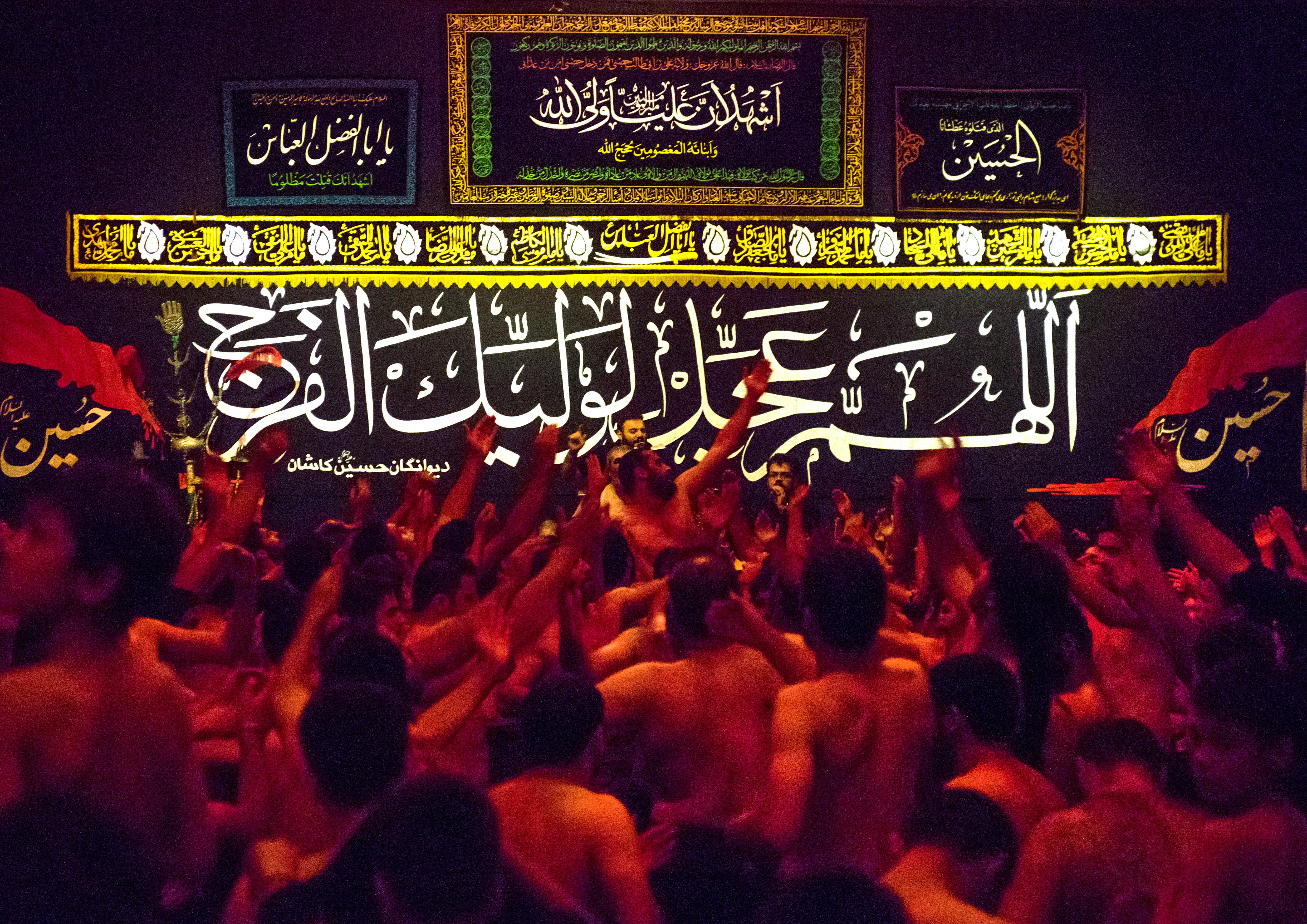
The most impressive Hussainiya can be found in Kashan, a two-hour drive south of Tehran. The “Mad of Hussein" meet there every afternoon during the month of Muharram. At the mention of his death, screams of pain can be heard in the Hussainiya, men start weeping like children and sobbing -
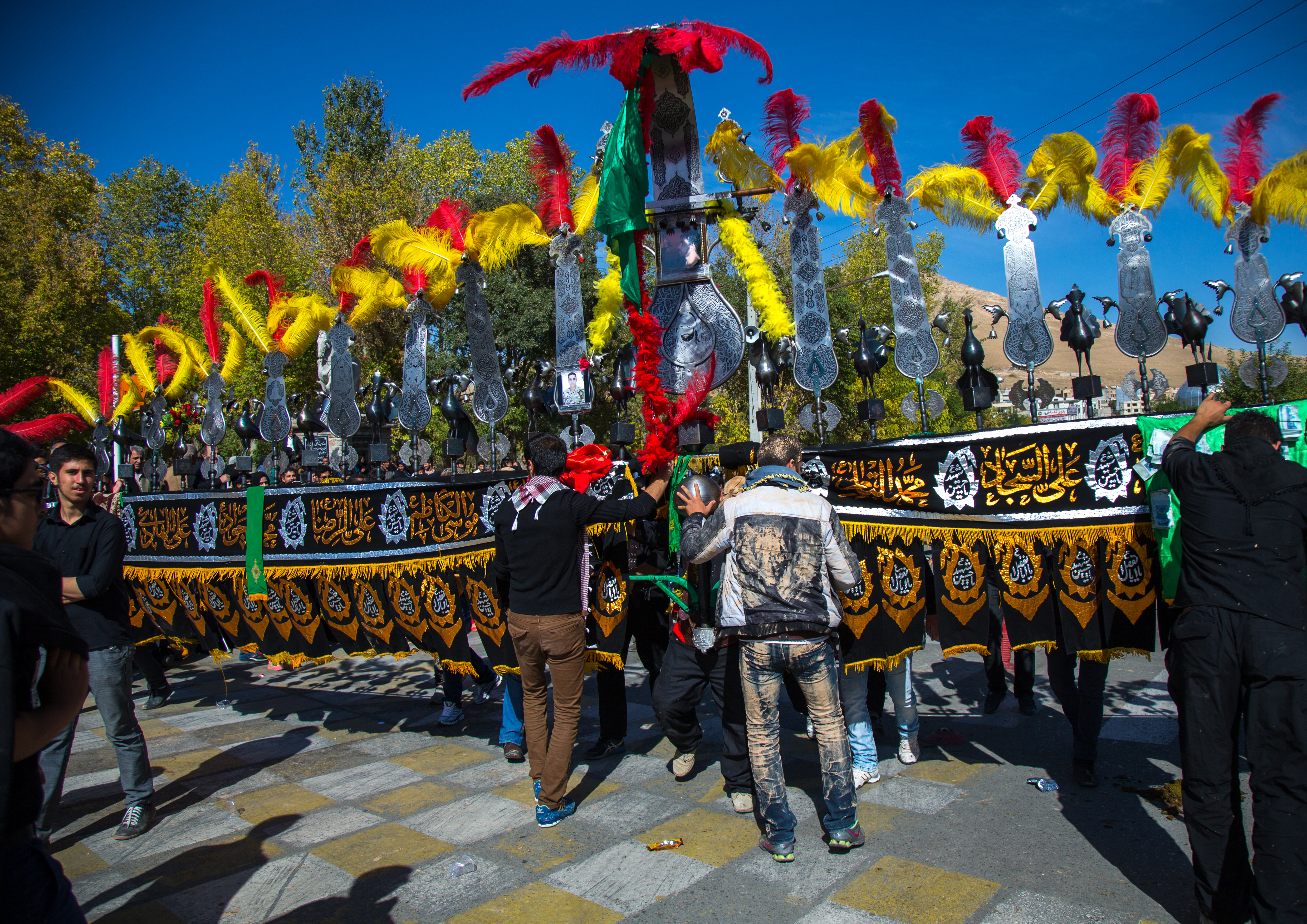
Heading up the Ashura parades is the alam – Hussein’s coat of arms. The alam is decorated with feathers, flags and verses of the Koran engraved on the flexible metal blades, which sway like the branches of a tree. The metallic artwork represents the hand of Abbas, flag bearer during the battle of Karbala -
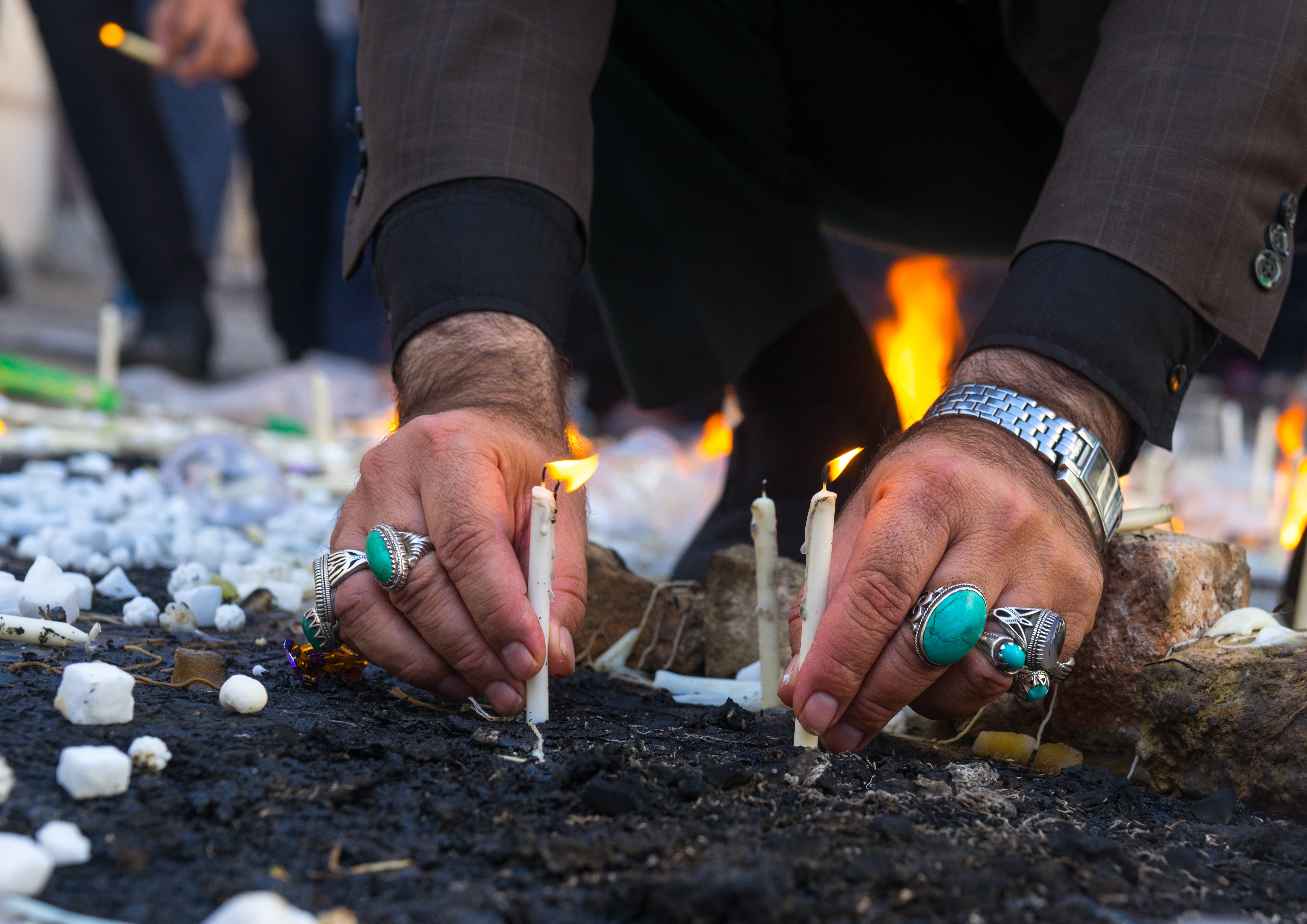
The city of Korramabad in western Iran hosts a unique ceremony – the Chehel Manbar or 40 Pulpits – on Tasua (the 9th day and eve of Ashura). Men and women must light 40 candles and place 40 sugar cubes in 40 different locations for their wishes to come true (successful studies, making money, finding a good husband, etc) -
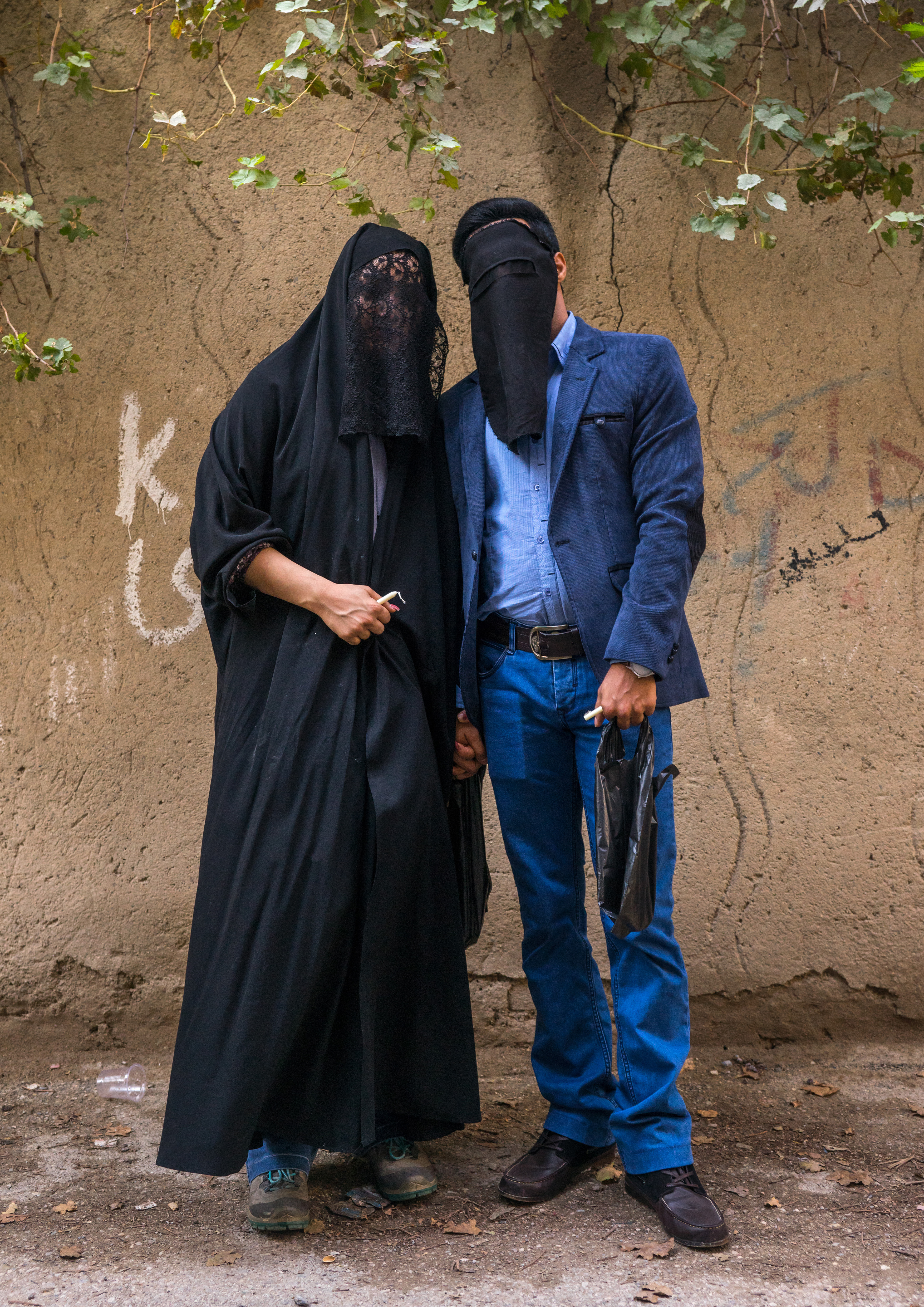
An Iranian Shia Muslim couple mourn Imam Hussein on the day of Tasua, their faces covered by a veil. This is unusual in Iran, where women usually just cover their hair with a scarf. On Ashura men also cover their faces to avoid being recognised when making vows. Also, many prefer to remain anonymous out of modesty -
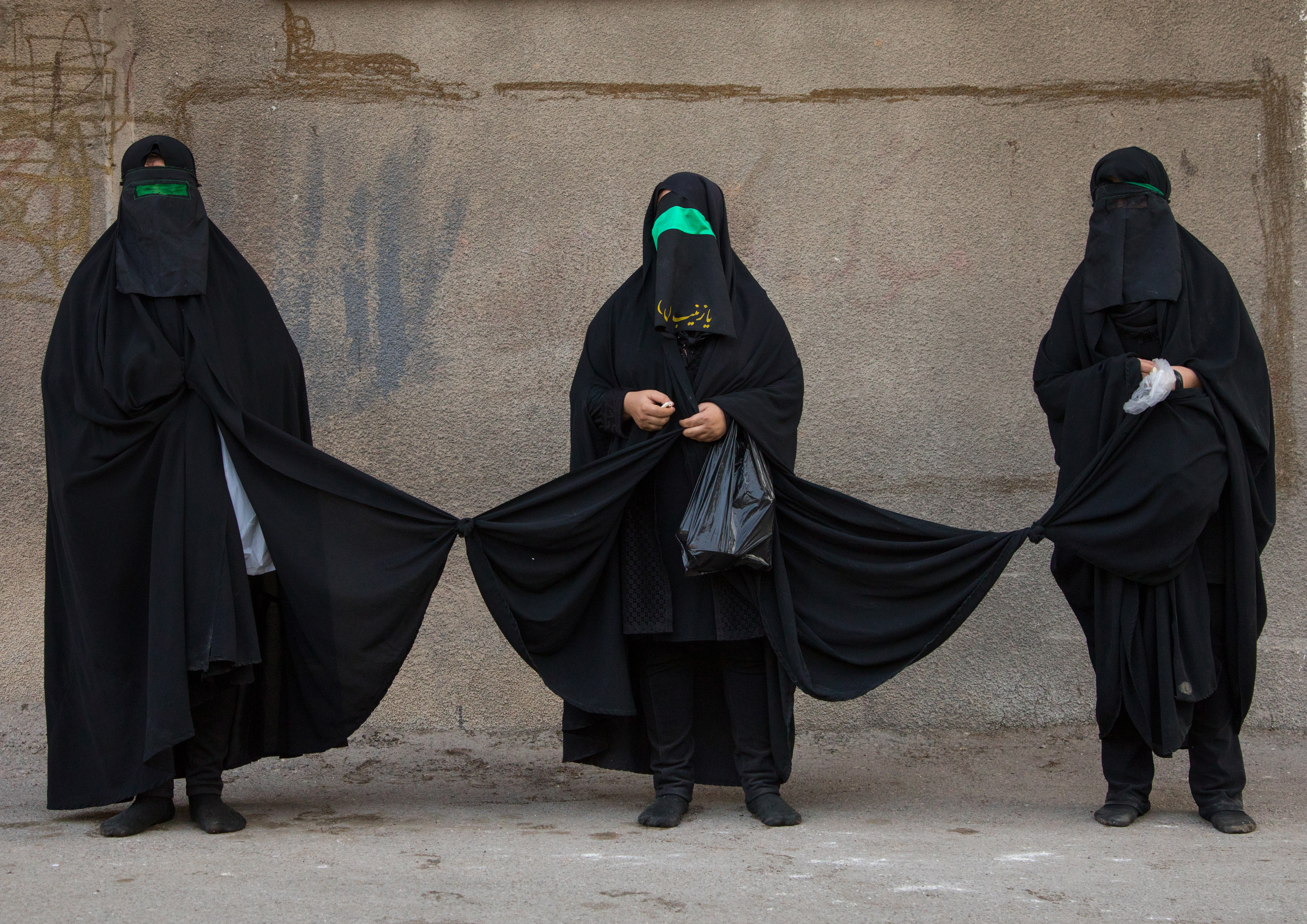
The most zealous also make a vow of silence for the day and walk barefoot as a sign of penance. Since they must remain silent, these three Shia women have knotted their chadors together to avoid getting lost -
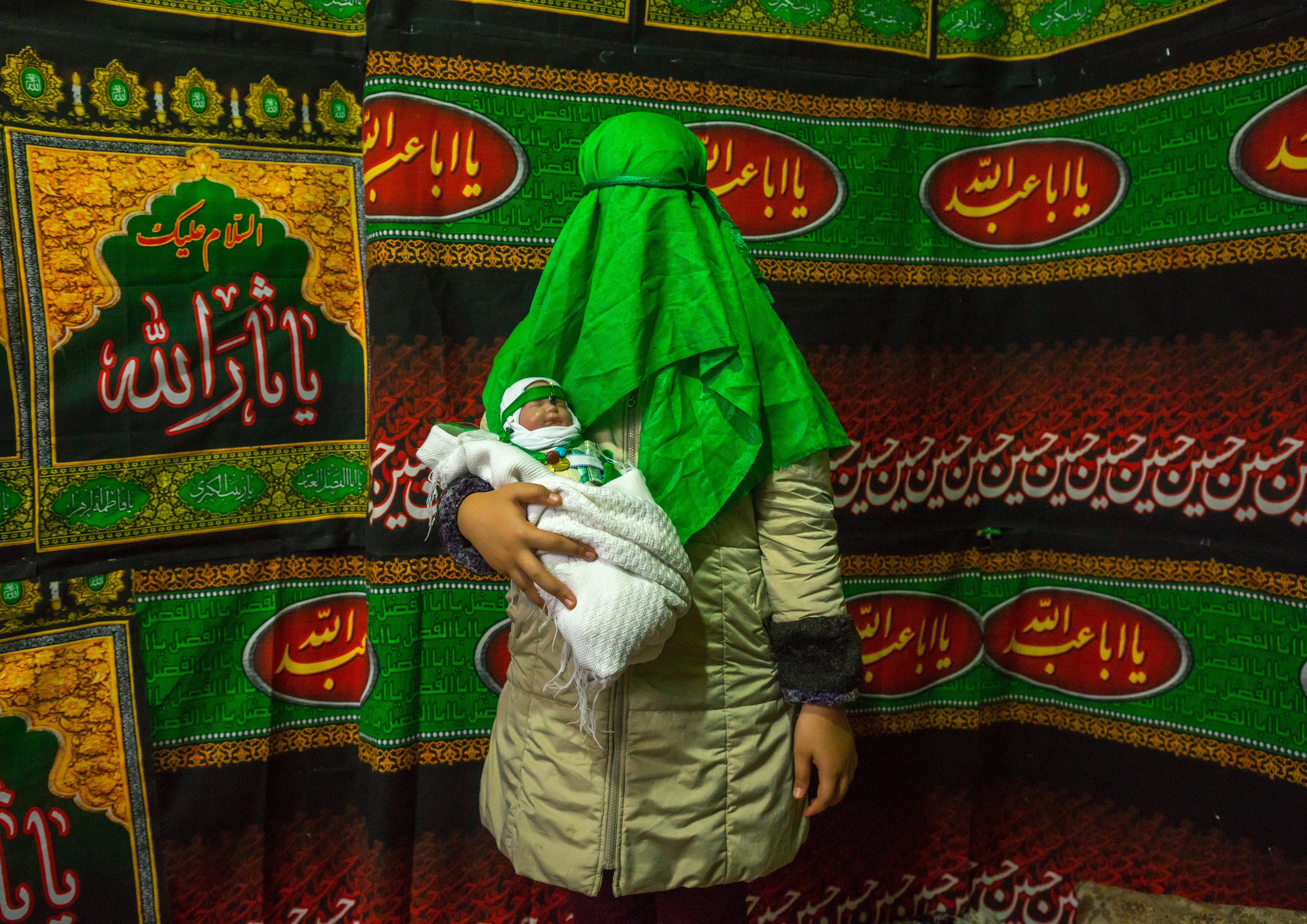
An Iranian woman with green veil covering her face holding a baby doll in her hands. The baby doll represents Ali al-Asghar, Hussein's young son who was killed in Karbala. Many woman carry around baby dolls on Chehel Manbar to demonstrate their wish to bear children soon -
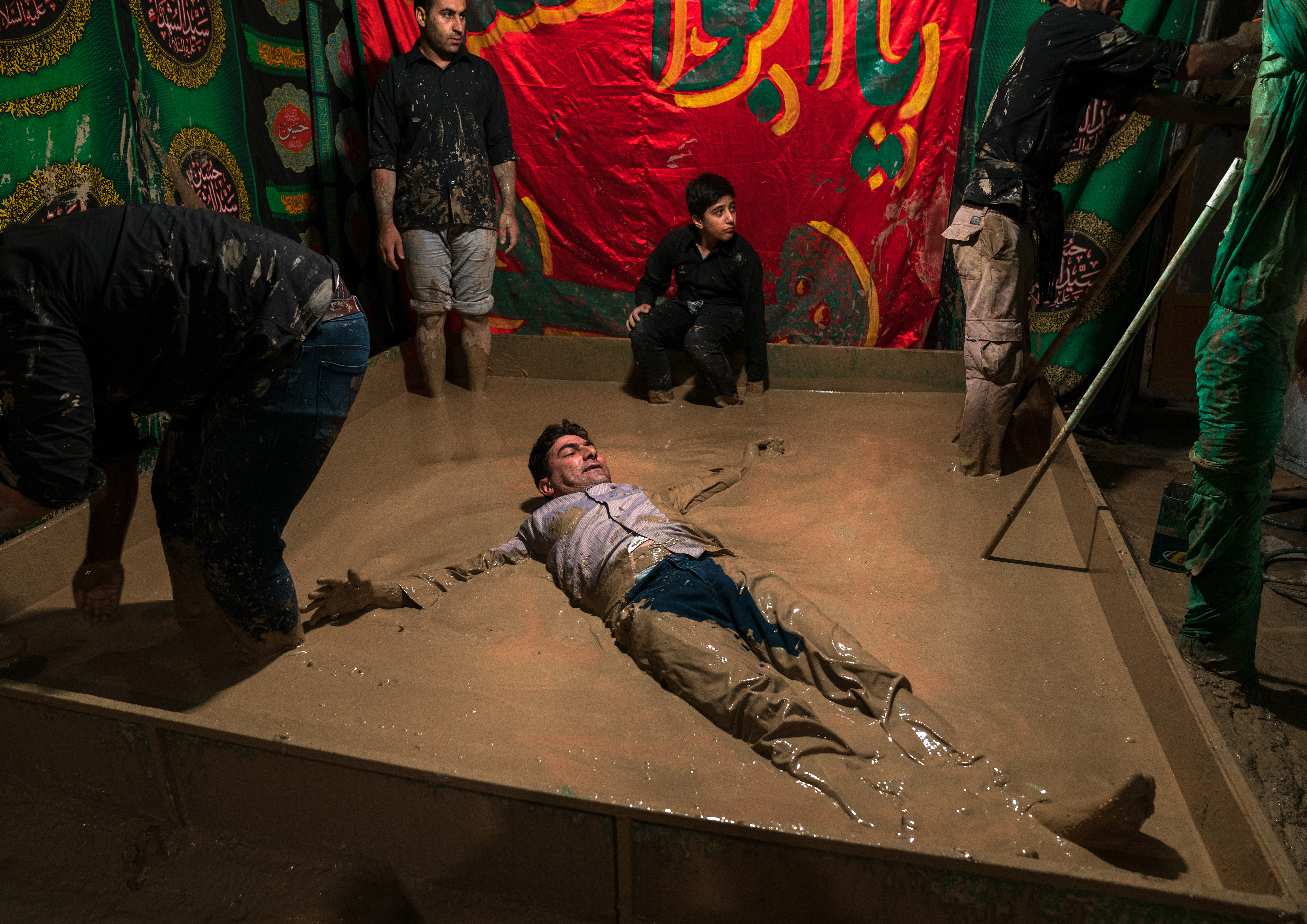
An Iranian Shia Muslim man lies in a mud pond as he takes part in the Kharrah Mali ritual during the Ashura ceremony. In the Iranian culture, mourners cover themselves in mud during the burial of a much beloved person. Recreating this gesture for Hussein is a way of showing him devotion -
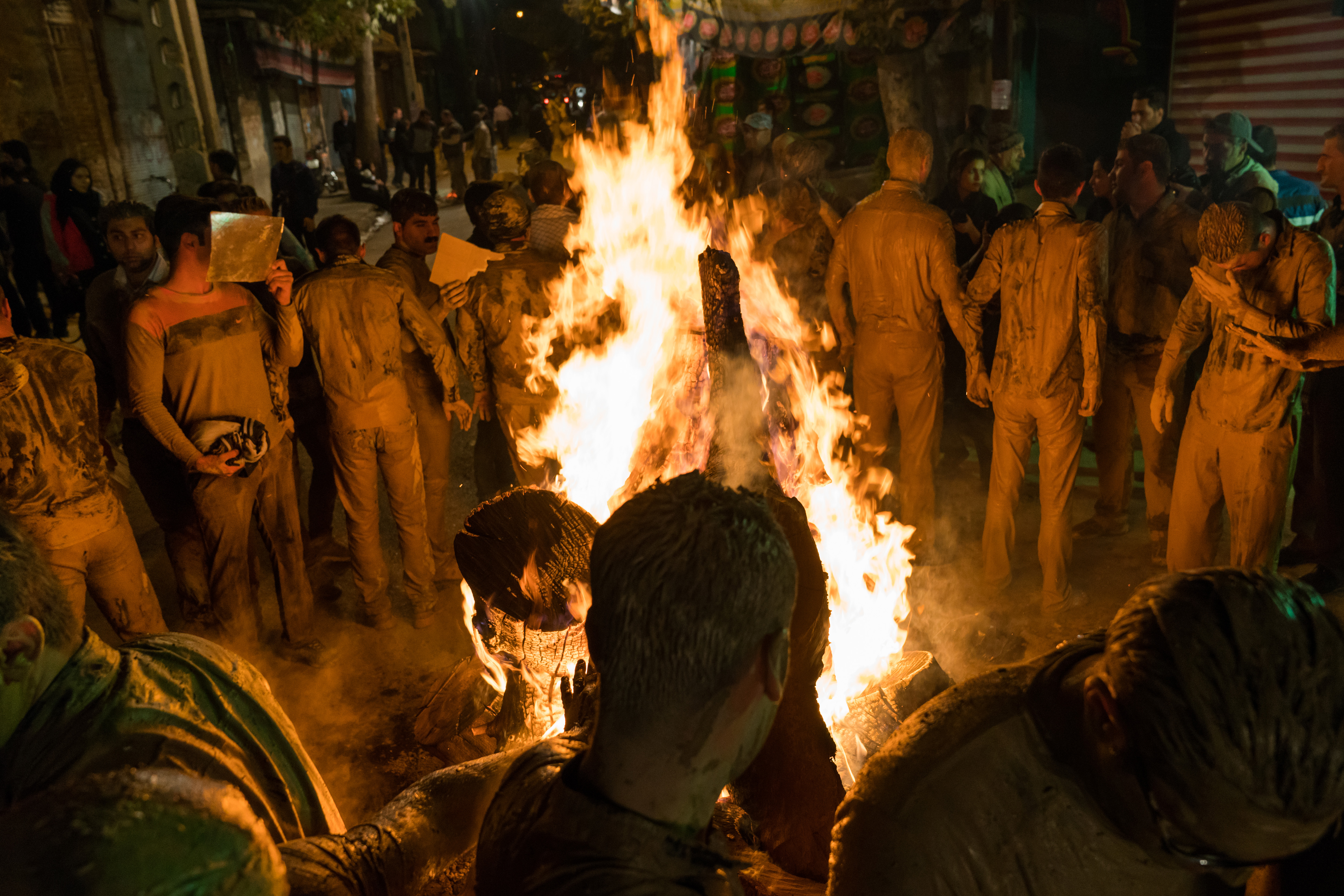
Iranian Shia Muslim men gather around a bonfire after rubbing mud on their bodies to mark the Ashura ceremony. A few mutter prayers as their teeth chatter with cold – it′s freezing at 5 am -
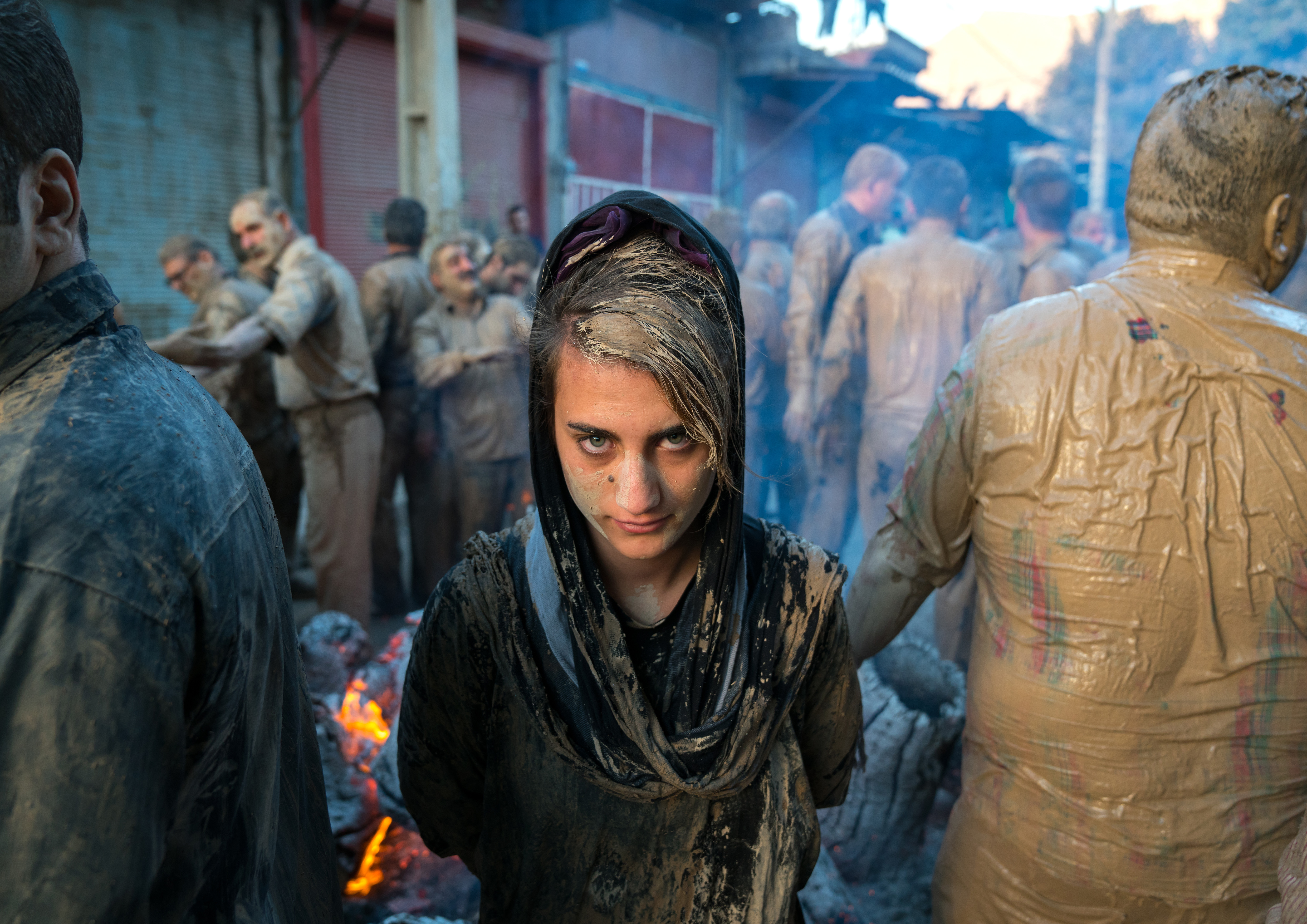
An Iranian Shia Muslim woman stands in front a bonfire after rubbing mud on her chador. Women are usually chaperoned by a male relative who smears them with mud before accompanying them to the fire where other men are standing – a rare moment of men and women mixing together -
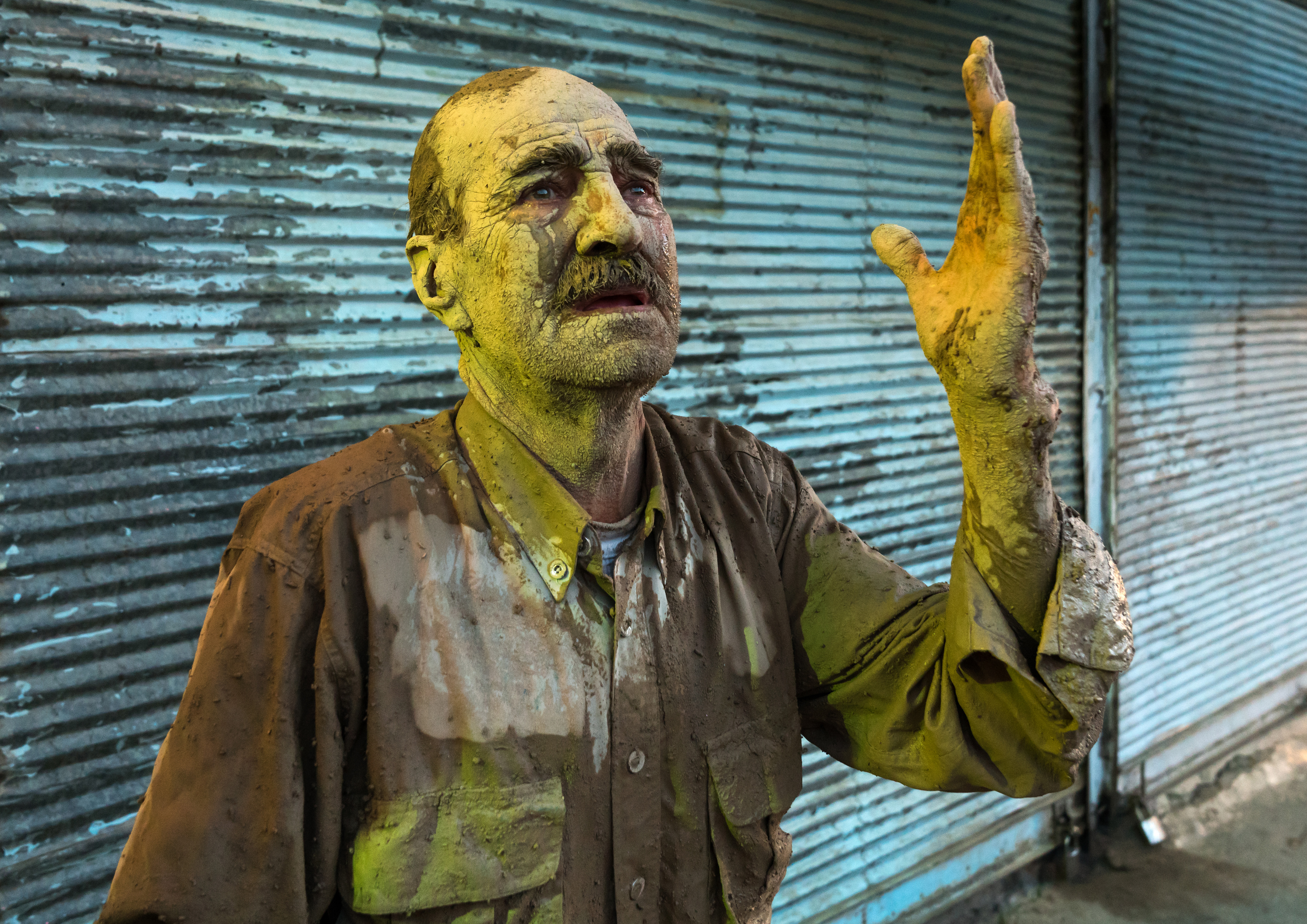
Ashura is an emotional time of year for many religious Iranians: covered in dried cracked mud, this old man looks like a statue in the pale neon lights of the shop fronts. He cries inconsolably, invoking Hussein’s name -
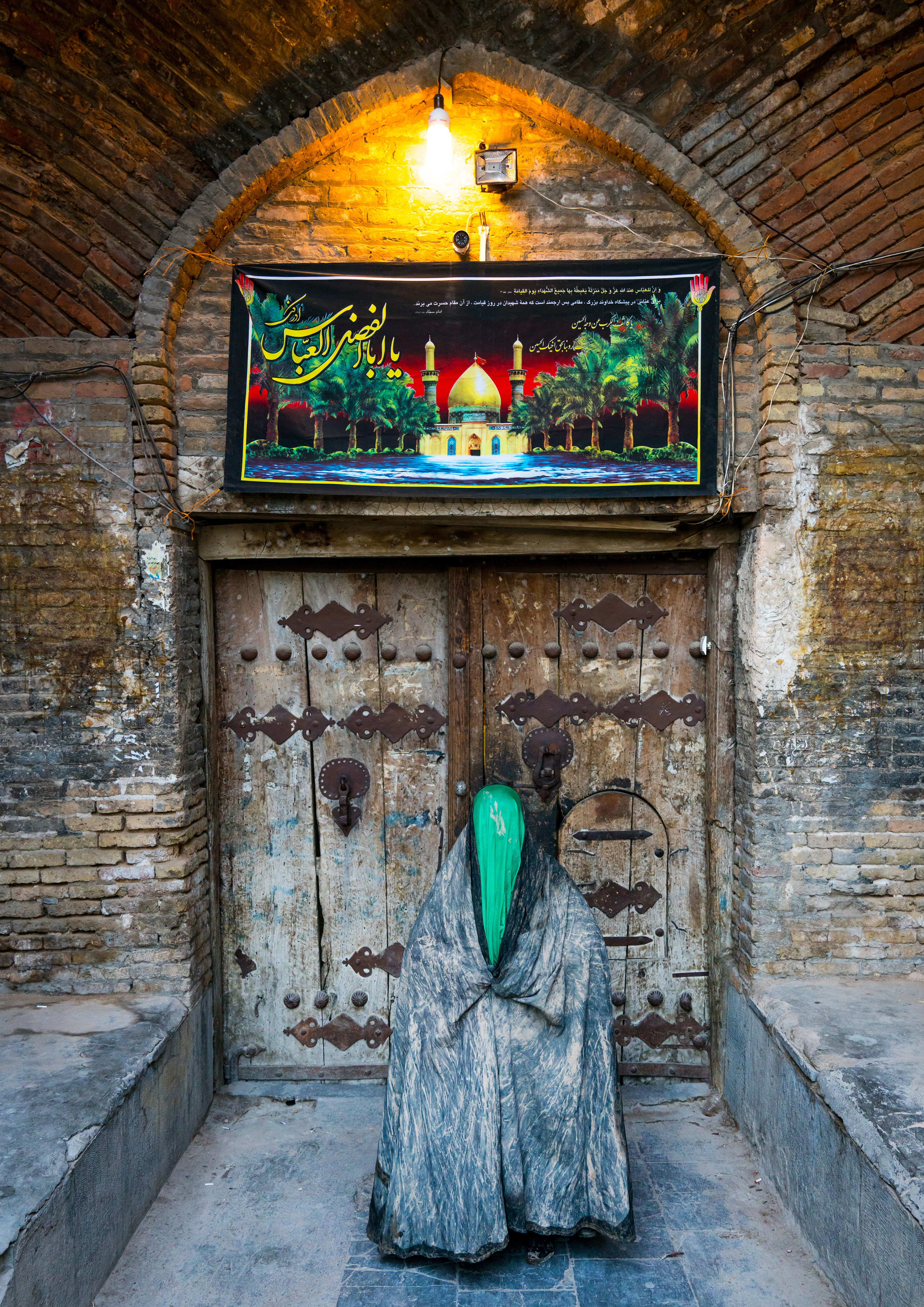
This Iranian Shia Muslim woman stands in front of an old wooden door after rubbing mud on her chador during the Kharrah Mali ritual -
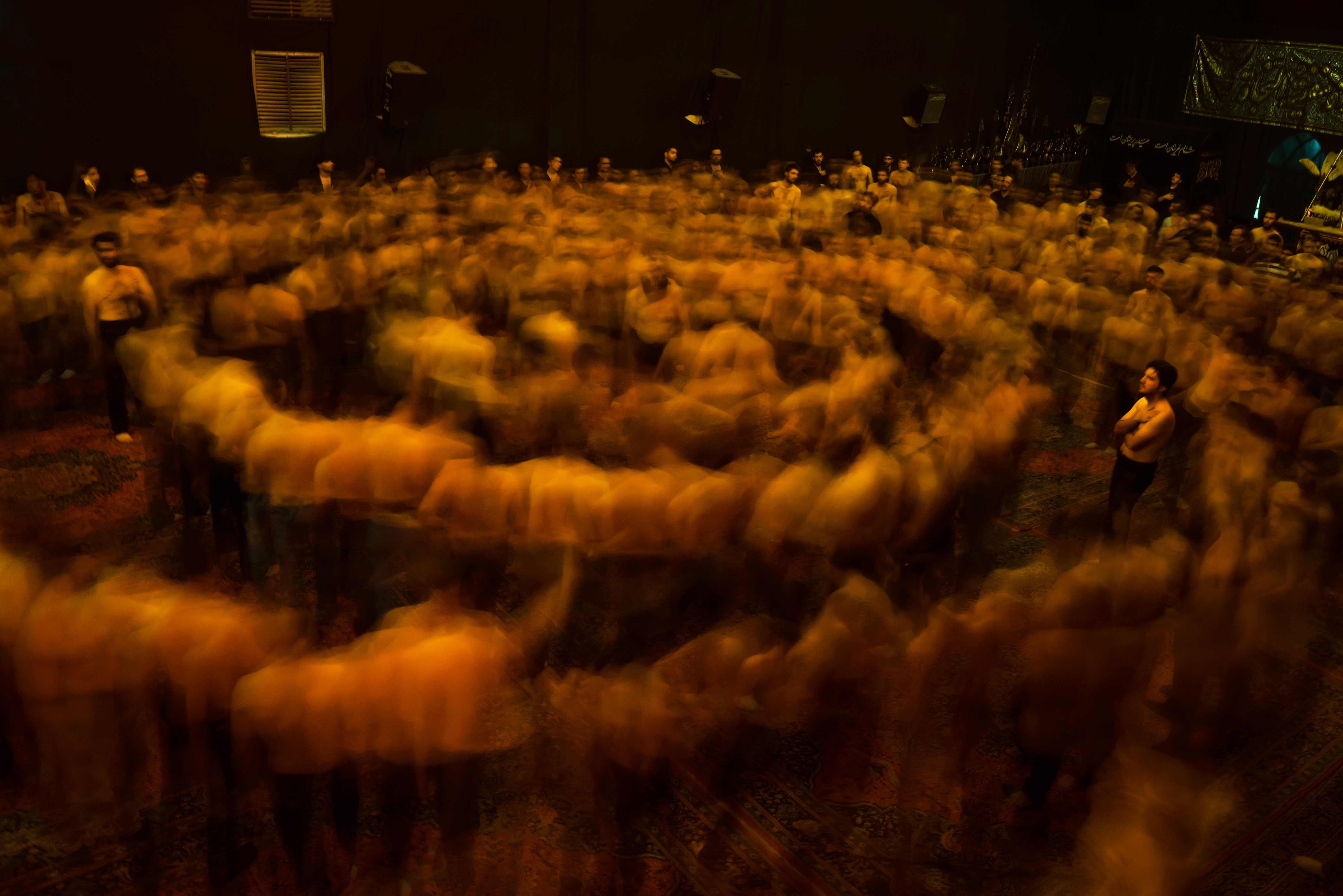
Guided by the Maddah's voice, circles are formed. Thousands of hands slam chests in perfect synchrony. The temperature rises and easily exceeds 50 degrees. Bodies jump and sway to the hypnotic beat of a chorus whispering "Hussein, Hussein" -
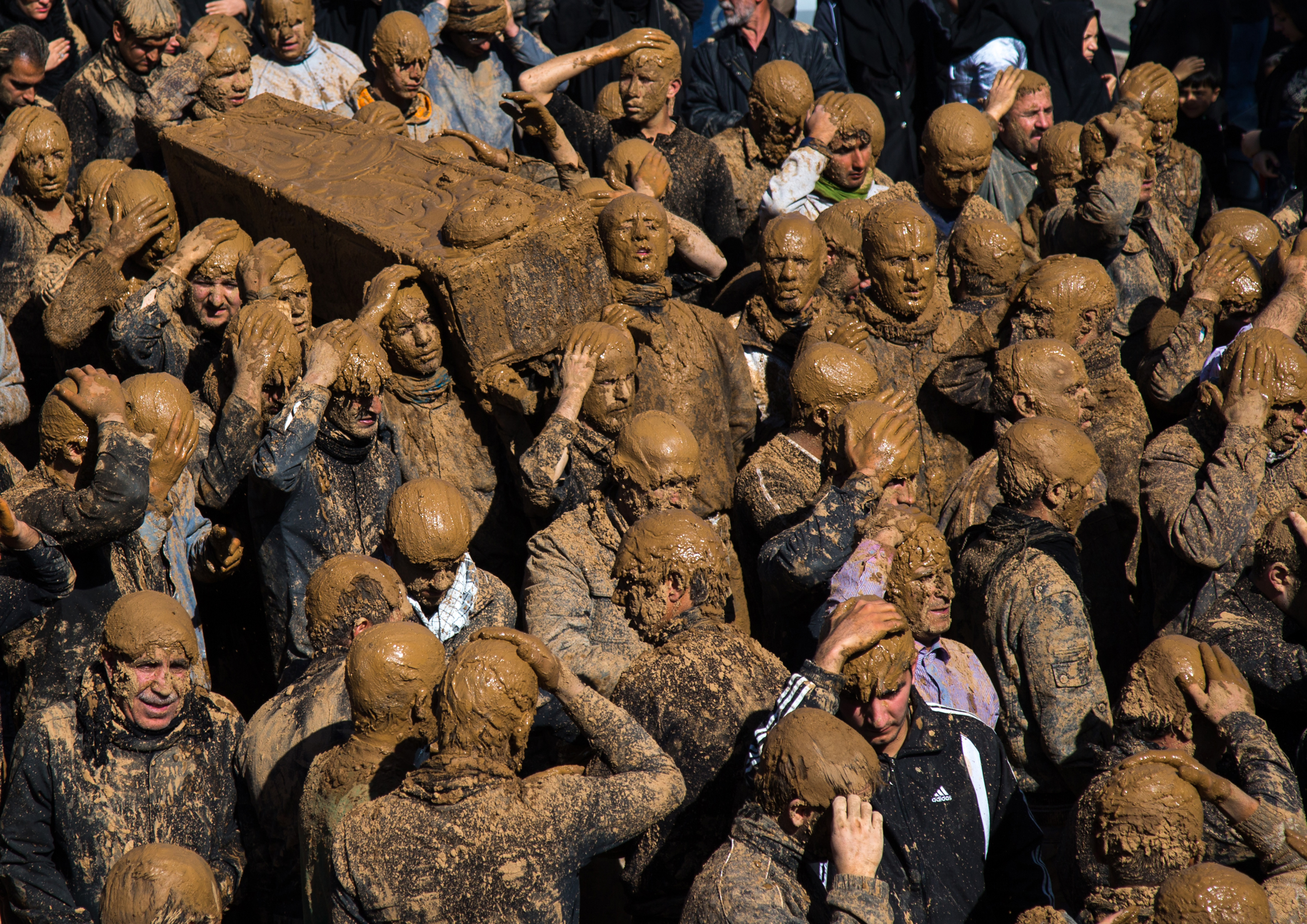
In the city of Bijar, which is populated by Iranian Kurds, pilgrims pour mud on their heads during an Ashura procession. The most fervent ones empty a full bucket of mud on their bodies. They bear the symbolic coffin of Hussein aloft -
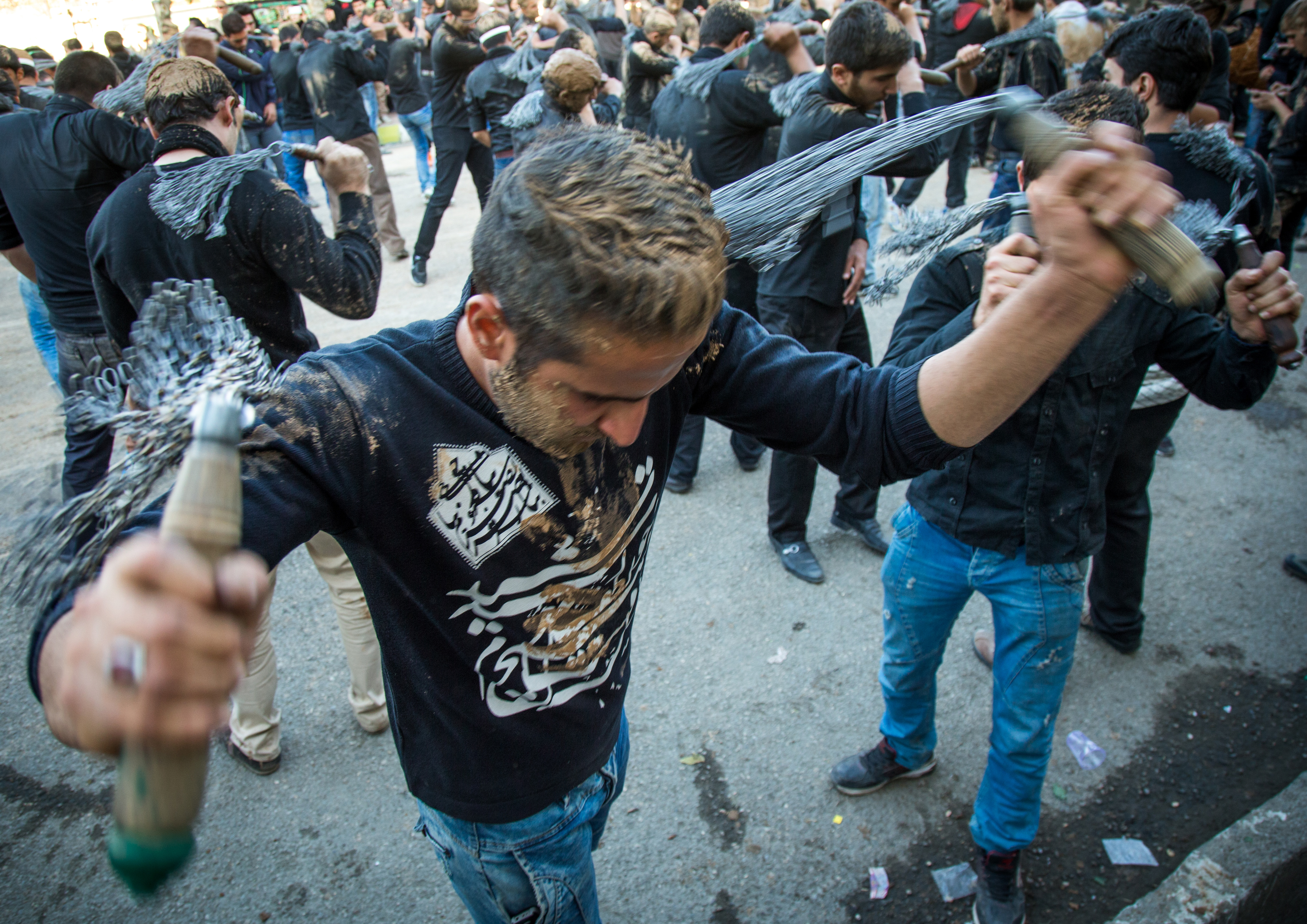
Iranian Shia men covered in mud beat themselves with iron chains during Ashura. They consider the flagellations with zanjirs (steel chains attached to sticks) as a way of sharing Hussein’s suffering -
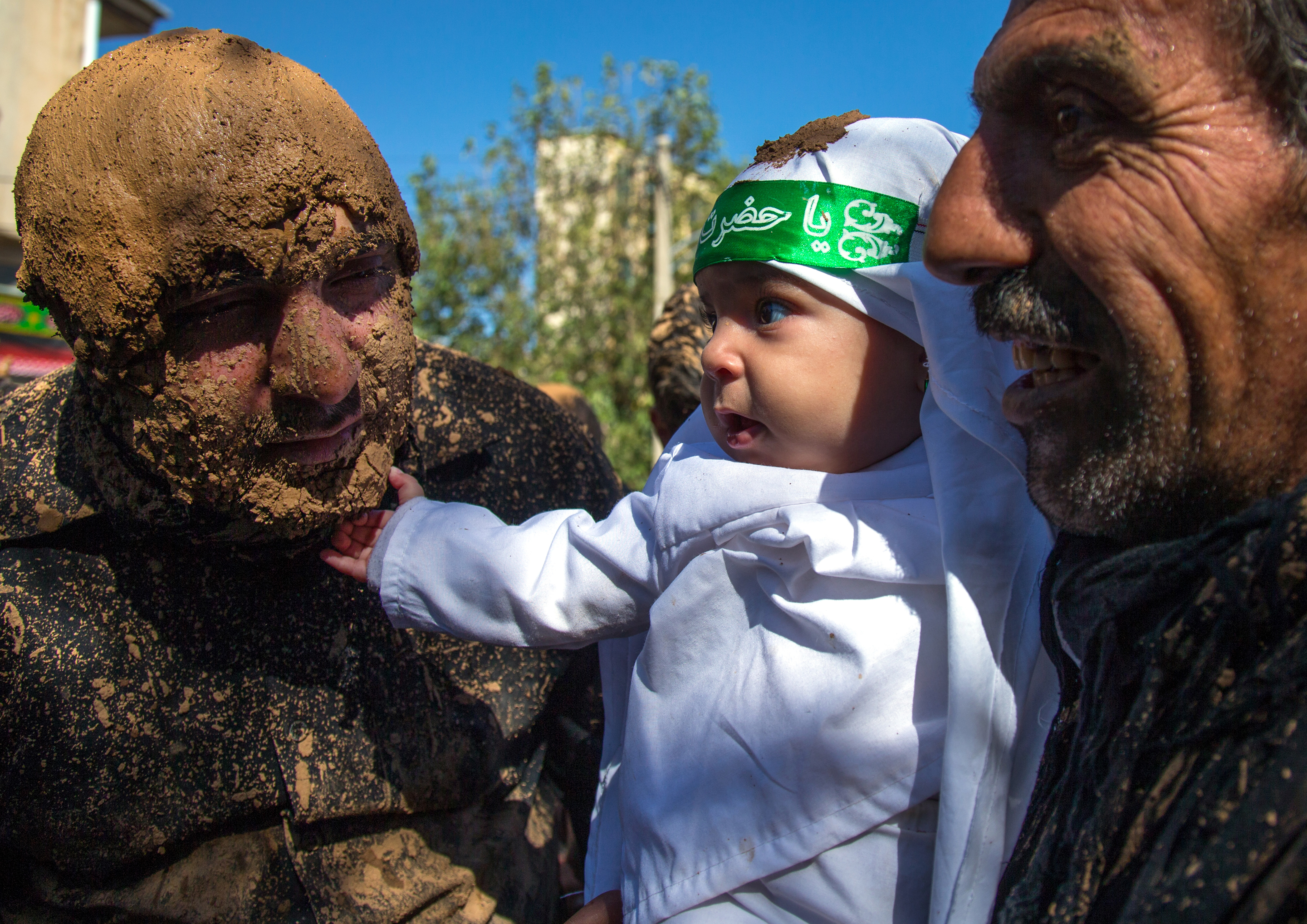
Babies are dressed up like Hussein's dead son, Ali, who was killed when he was 6 months old in Karbala. These clothes have been given out for free by an Iranian charity for more than 15 years. Parents are very proud to show off their children dressed up like this
https://qantara.de/en/node/13179
Link
To all image galleries